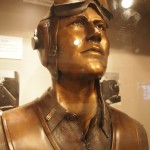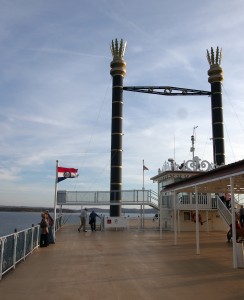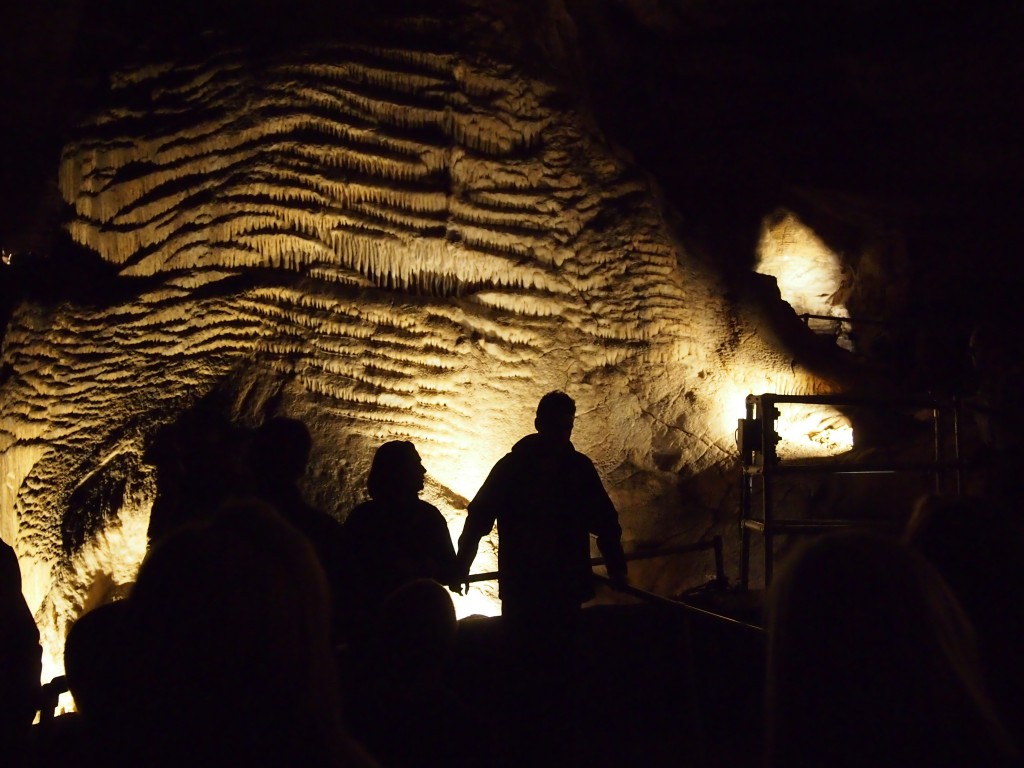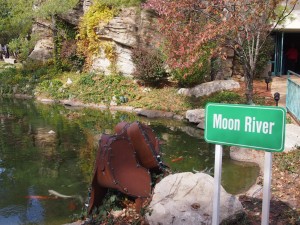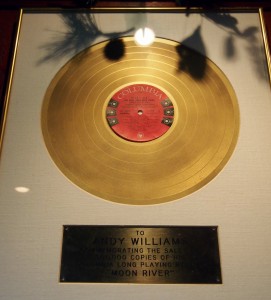On Sunday, November 4, I had the Veterans Memorial Museum in Branson practically to myself, though I knew that only a week later, on Veterans Day, the place would be full. Or for that matter, more crowded during much of “Branson’s Veterans Homecoming Week,” which was from November 5 to 11 this year. The 18,000-square-foot museum opened in 2000 on Missouri 76, one of the town’s main streets, and is essentially the work of a Nebraska sculptor and “museum entrepreneur” named Fred Hoppe. Glowing information about him is at the museum’s web site; a less flattering story is at the Branson Tri-Lake News.
Be that as it may, the Veterans Memorial Museum is a fine little museum, traditional in design and subject matter. That is, most of the displays are static, relying mainly on artifacts, with a fair amount of expository text. The place runs counter to the line of modern museum thinking – which might be accurate, for all I know – that exhibits should be interactive two-and-a-half ring circuses to keep museumgoers happy. But I’m OK with static, text-heavy displays, especially if I’m by myself and have some leisure to look and read.
The subject and layout reminded me a little of the Imperial War Museum in London, as well as the Musée du Débarquement in Normandy, at least as those places appeared in the early 1990s, though both are larger and much more comprehensive about their subjects. The Veterans Memorial Museum is composed of ten rooms covering U.S. wars of the 20th century, beginning with a small room containing a large model of the U.S.S. Missouri, a newsreel about the Japanese surrender aboard that vessel on continuous loop, and a few other artifacts. After that, the exhibits began with World War I and proceeded chronologically. Because of my own inclinations, I spent more time with World War I than in any other room.
There was a lot to see just in that room: photos, paintings, uniforms, weapons and other gear, objets d’ art, and more, and not just representing the U.S. or even the Allies, though they were the main focus. I’m pretty sure I’d never seen an actual Blue Max before, nor a WWI German artillery helmet. Artillery helmets of that time, it seems, didn’t have the famed spike on top, but a ball-shaped peak. The room also sported a nice collection of trench art, especially decorated shell casings, including some remarkably elaborate carvings. One way to pass the tedium of trench life, I suppose.
Among the photographs was, I thought, a particularly poignant one. It depicted graves, a common enough sight, but with a caption explaining that they belonged to men of the 324th Infantry, all of whom “died in the last three hours of the war.”
One long wall of the World War I room looks, at first, blank. Then you notice that it’s covered, floor to ceiling, with sepia-tinted doughboys’ faces, each about the size of a dime. The faces are repetitive, since the effect is created by putting together long strips seemingly copied from the same panoramic regimental photo. No matter. The point of the wall is to impress you with a vast number of faces, and it does. One face, a sign says, stands for every two Americans who died in the Great War, which was about 117,000 men all together. A wall of doomed youth, looking out at you from behind glass and nearly a 100 years.
The other rooms include a sizable number of interesting artifacts, both American and from other nations, including in what I can only call the Axis Room. (As the History Channel knows, Nazis are always interesting.) Besides Nazi and imperial Japanese paraphernalia, one can also find an Enigma encryption machine in that room, the likes of which I’ve seen at the Museum of Science and Industry and (I think) the Science Museum in London. I should have taken a moment to mock the machine: Ha! We decoded your ass! But I didn’t think of it.
The centerpiece of the museum is in a World War II room – there’s more than one room devoted to that war – that includes 50 bronze life-sized soldiers charging in two lines. A work of sculptor Fred Hoppe, “Each figure in the WWII centerpiece is modeled after an actual combat soldier, one from each of the fifty states,” notes the museum web site. “Leading the charge up the beach is Fred’s father, the late Fred Hoppe Sr.”
The room is long and narrow, as you’d expect, and the names of each American serviceman to die in the war, about 416,800 in all, are written all along its walls. An effective reminder of the war’s cost to the United States, certainly, but I have to say the doughboy faces on the WWI wall were more moving, even though that was only pictorial representation, and not a detailed accounting of individuals.
